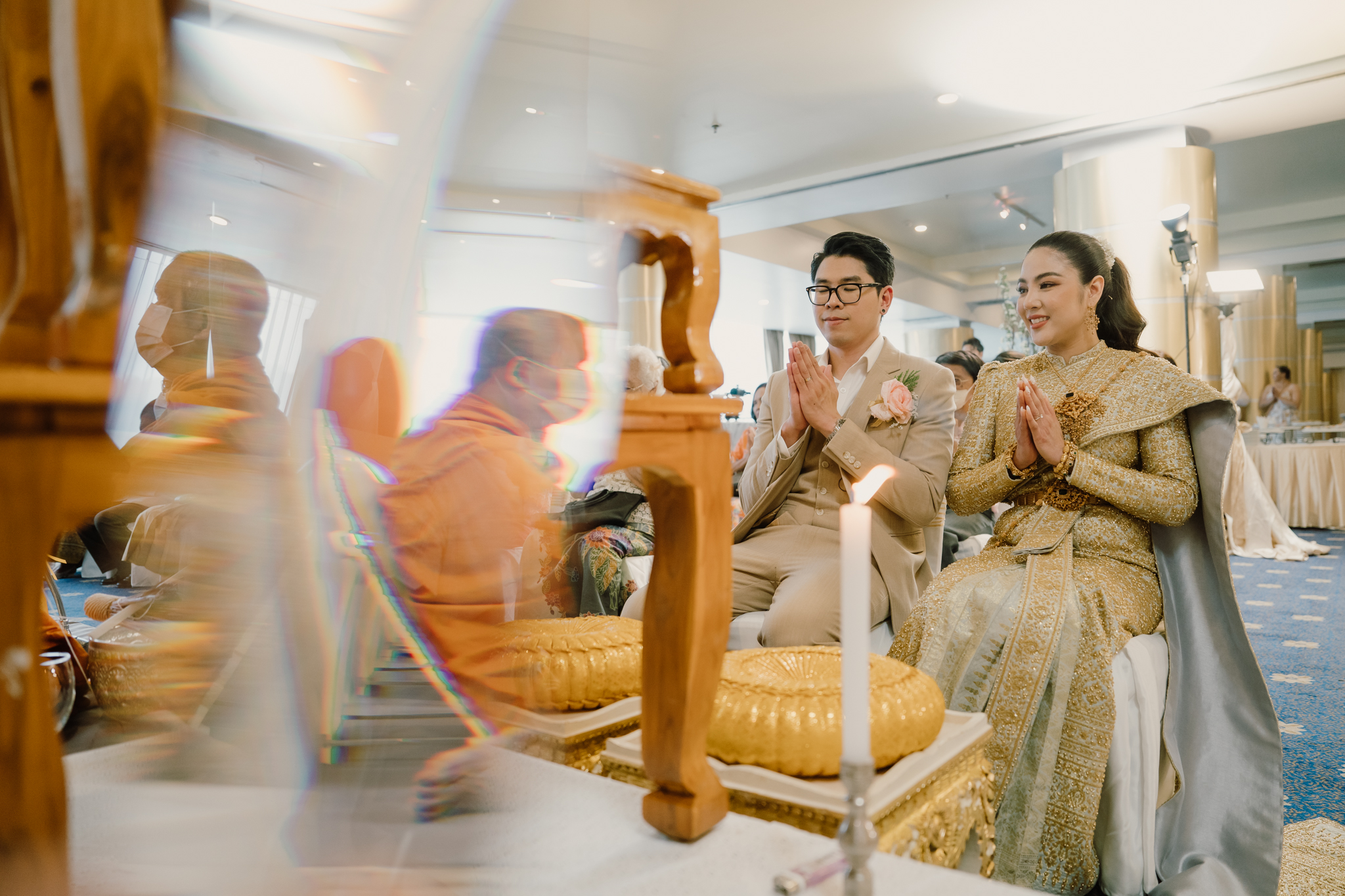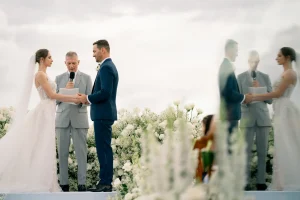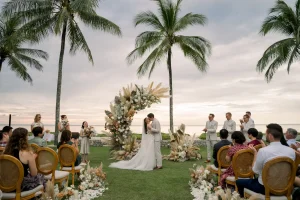Thai wedding ceremonies are renowned for their elegance, rich cultural significance, and beautiful traditions. While modern couples might opt for contemporary celebrations, traditional Thai weddings remain popular for their unique charm and deep-rooted customs. Many international couples who marry in Thailand also choose to incorporate some traditional Thai rituals into their wedding. In this guide, we’ll walk you through the nine essential steps of a traditional Thai wedding ceremony
1. The Khan Maak Procession
The wedding day begins with one of the most vibrant and joyful traditions – the Khan Maak procession. The groom, accompanied by his family and friends, forms a parade to the bride’s home. The procession is led by traditional dancers and musicians playing drums, creating a festive atmosphere. They carry traditional offerings including banana and sugarcane plants, Khan Maak (traditional gifts), engagement rings, dowry, and auspicious fruits and desserts.
As the procession moves through the community, there’s a delightful tradition of local villagers playfully interacting with the group, calling out “Where are you going?” to which the procession responds, “We’re here to ask for the bride!” Interestingly, families with unmarried daughters along the route may take some Khan Maak items as good luck tokens for their daughters’ future marriages.
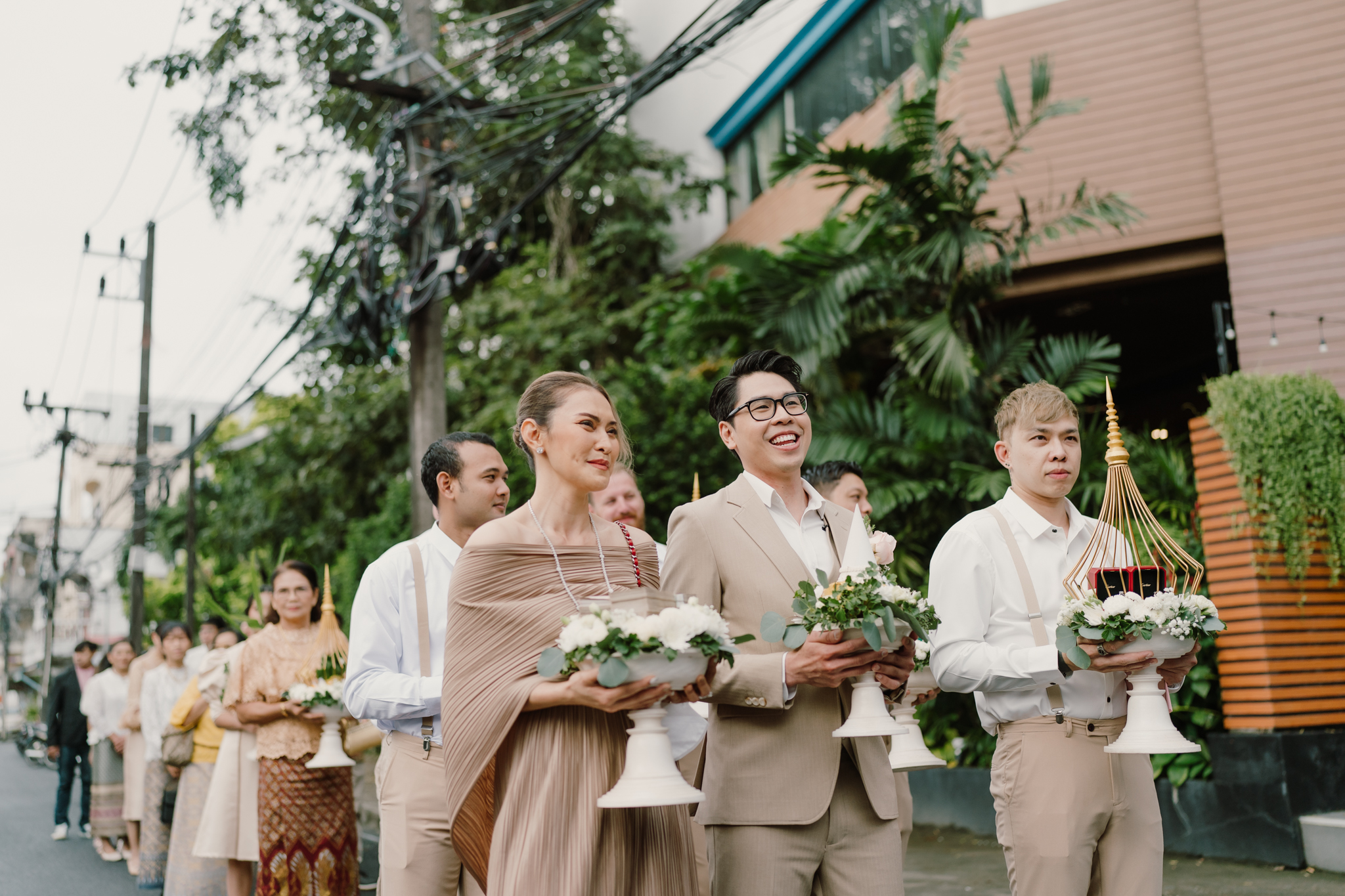
2. The Buddhist Merit-Making Ceremony
In keeping with Thai Buddhist traditions, the wedding day includes a merit-making ceremony. Buddhist monks are invited to chant blessings and consecrate holy water for later use in the ceremony. The couple makes merit together by offering alms to the monks, followed by a water-pouring ritual. According to tradition, houses hosting merit-making ceremonies are blessed with a pleasant fragrance. The ceremony includes not only offerings to Buddha but also to the house spirits and wandering spirits outside the home, ensuring comprehensive spiritual blessings for the occasion.
3. The Dowry Presentation
This traditional ceremony involves the formal presentation of the dowry (Sin Sod) to the bride’s family. The bride’s mother inspects the dowry, which is then arranged on red, silver, or gold cloth. Following tradition, beans, puffed rice, and flowers are sprinkled over the dowry. The bride’s friends then demonstrate the dowry’s worth by lifting it, symbolizing its substantial value, before taking it away for safekeeping.
4. The Ring Exchange
Following the dowry presentation, the couple exchanges engagement rings. The groom first places the ring on the bride’s finger, after which she bows in respect – either to his lap or chest. The bride then places a ring on the groom’s finger, completing this symbolic exchange of commitment.
5. The String-Tying Ritual
Respecting elders is a cornerstone of Thai culture, and this ceremony beautifully reflects this value. The newlyweds present incense sticks and candles to their elder relatives, who in turn bless the couple and tie sacred strings around their wrists. This ritual, known as “Phuk Mue,” symbolizes good fortune and the binding of their futures together. The elders often provide monetary gifts to help the couple start their new life together.
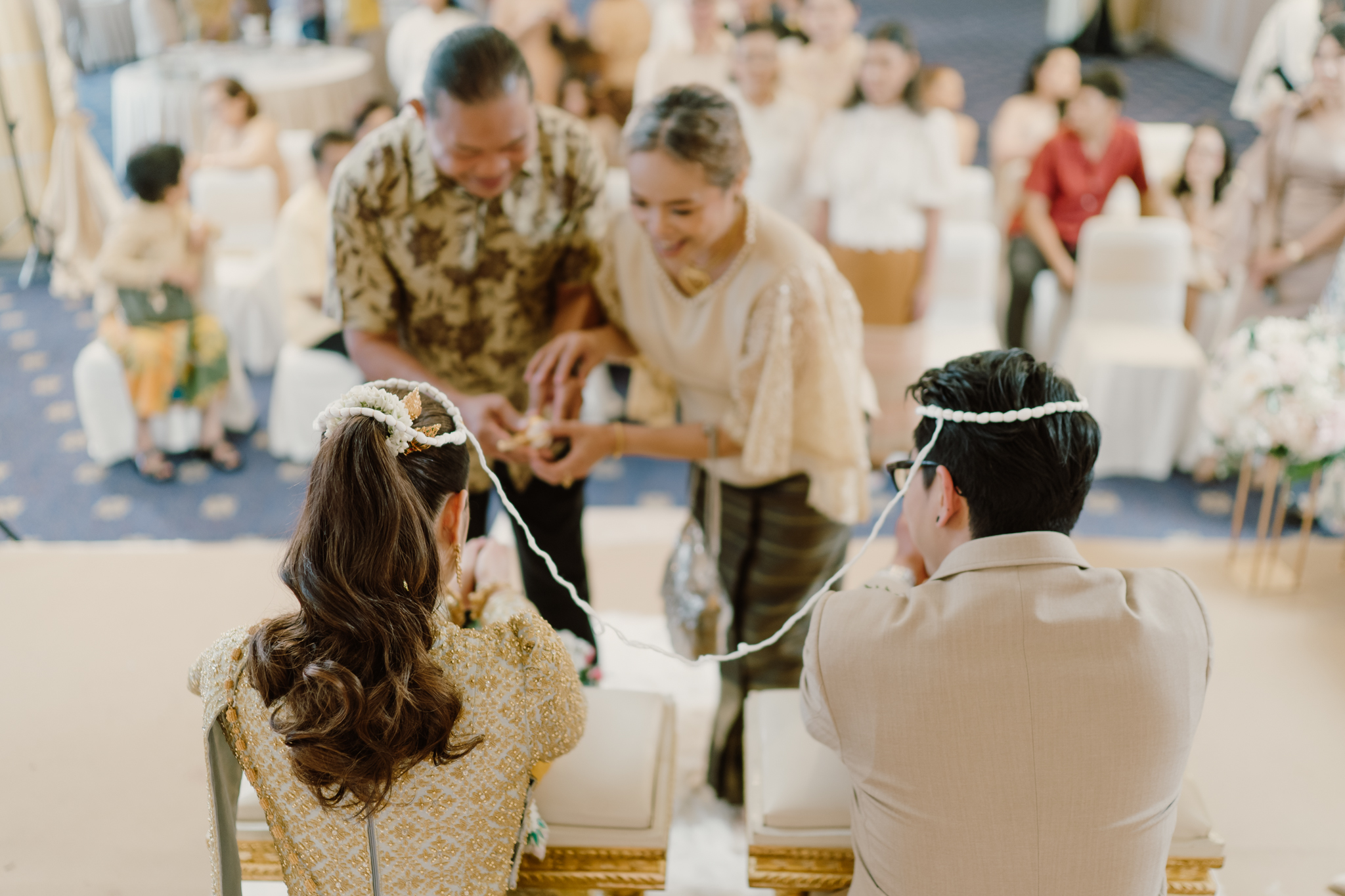
6. The Anointing Ceremony
Before the main water-pouring ceremony, the couple undergoes an anointing ritual. They light candles at the ceremonial altar, and the ceremony’s officiant places flower garlands around their necks and applies a sacred powder mark on their foreheads, blessing them for their journey ahead.
7. The Water-Pouring Ceremony (Rod Nam Sang)
Perhaps the most iconic part of a Thai wedding, the Rod Nam Sang ceremony is both beautiful and meaningful. After receiving their ceremonial garlands and anointment, the couple sits with their hands pressed together on cushions while guests pour sacred water over their hands. Starting with the elders and following in order of seniority, each guest offers blessings and good wishes for the couple’s future together. An interesting tradition states that if the couple has any unmarried older siblings, they should drink water from the conch shell used in the ceremony as a blessing to help them find their own marriage partner.
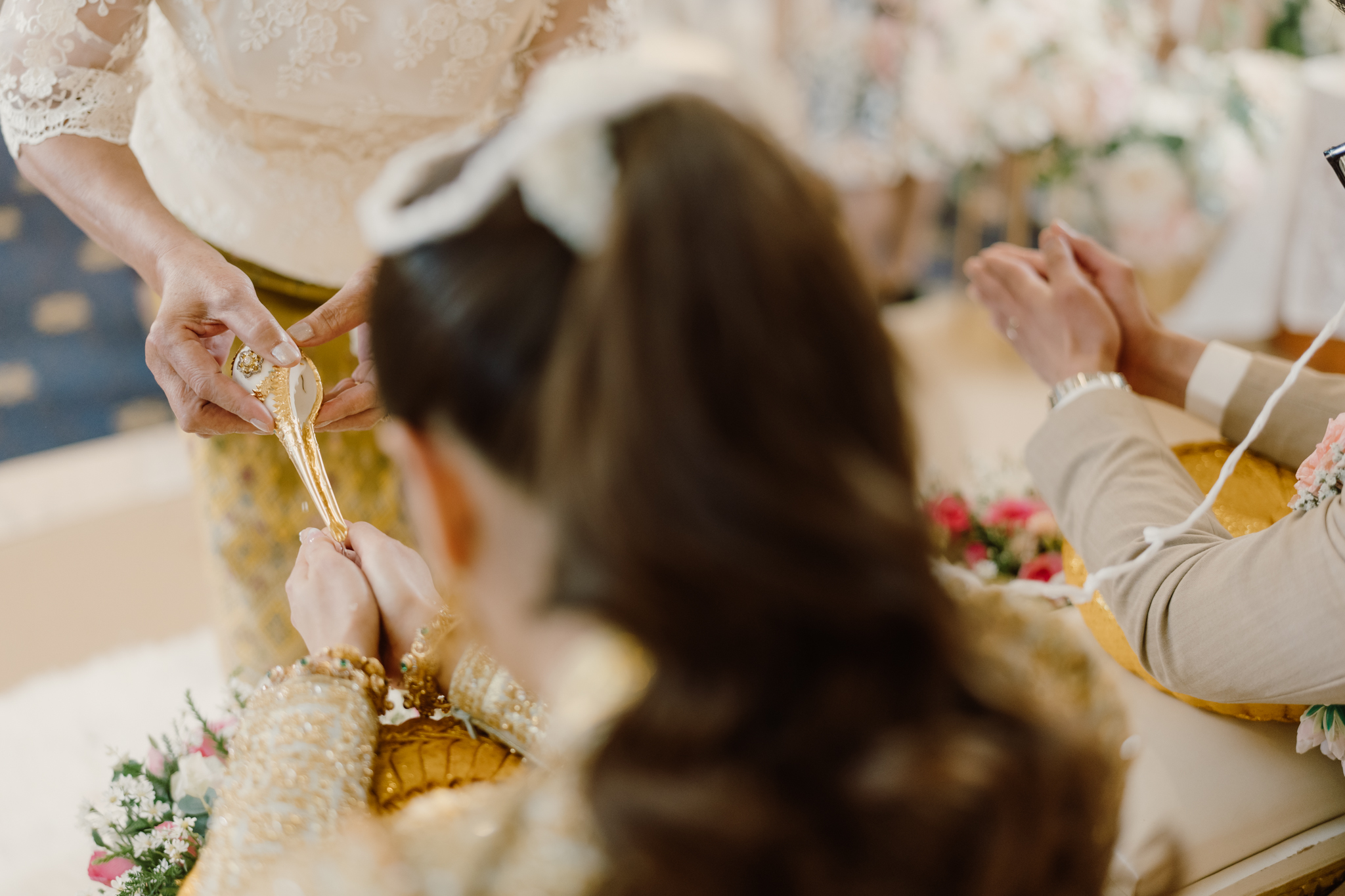
8. The Marriage Registration
While some couples choose to register their marriage at government offices beforehand, others incorporate it into their wedding day following the traditional ceremonies. For those wishing to register during the wedding, arrangements must be made with district officials at least three days in advance, with a small additional fee for the official’s travel to the venue.
9. The Bedroom Ceremony
The final ritual involves the preparation of the couple’s marital bedroom. Respected married couples are invited to arrange the bedroom, placing two pillows and various auspicious items including green gourds, grinding stones, walking sticks, money pouches, rainwater, and holy water on the bed. As part of the ceremony, these respected elders briefly lie on the bed and speak words of blessing, such as “This bed is very comfortable” and “Whoever sleeps here will find happiness and prosperity.” They then sprinkle flowers and puffed rice on the bed for good fortune. The ceremony concludes with the bride’s mother formally entrusting her daughter to the groom’s care, followed by words of wisdom from the elders about married life.
A Note About Regional Variations
It’s important to note that while these are the traditional steps of a Thai wedding ceremony, customs can vary significantly by region and family. As a common saying in Thailand goes, “weddings aren’t organized for the couple, but for their parents,” highlighting the importance of respecting family wishes and being flexible with traditions. Each family may have their own unique ways of celebrating while maintaining the core elements of these beautiful customs.
These nine steps form the foundation of a traditional Thai wedding ceremony, each rich with symbolism and cultural significance. While modern couples might adapt or simplify these traditions, they continue to represent the beauty and depth of Thai cultural heritage in celebrating the union of two people in marriage.
Photography by Madiow Photography

